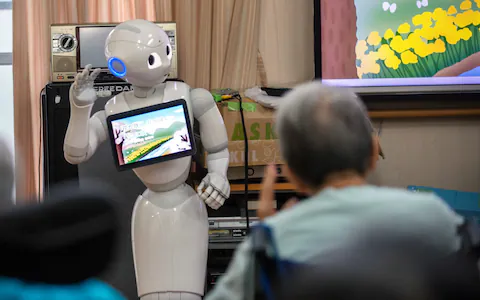The Spring (Socially Assistive Robots in Gerontological Healthcare) Robots designed to assist elderly patients have entered a crucial phase of testing, offering promising prospects for enhancing the quality of care for ageing populations. The initial trial took place at Assistance Publique Hopitaux de Paris, in France.
With advancements in robotics and artificial intelligence, these devices aim to provide personalised support, promote independence, and ensure safety for seniors. As these robots undergo testing, they represent a significant step toward revolutionising elderly care.
Read also: Nigeria Launches Africa’s First Humanoid Robot, Omeife
Advantages of Robotic Assistance
Robotic assistance offers several advantages in elderly care settings. Firstly, these robots can provide round-the-clock support, alleviating the burden on human caregivers and ensuring continuous monitoring of patients’ well-being. Additionally, they can perform various tasks, including medication reminders, mobility assistance, and companionship, enhancing the overall quality of life for elderly individuals. Moreover, robots equipped with sensors and AI algorithms can detect emergencies promptly, facilitating timely intervention and reducing the risk of adverse outcomes.
Enhancing Independence and Dignity
One of the primary goals of robots designed for elderly care is to enhance independence and preserve the dignity of ageing individuals. By assisting with daily tasks such as dressing, grooming, and meal preparation, these robots empower seniors to maintain their autonomy and sense of agency. Furthermore, the discreet nature of robotic assistance helps mitigate feelings of dependency and fosters a sense of self-reliance among elderly patients. As a result, seniors can retain their dignity while receiving the support they need to thrive.
Robots equipped with advanced AI capabilities can deliver personalised care tailored to the specific needs and preferences of each individual patient. Through machine learning algorithms, these robots can analyze data such as mobility patterns, vital signs, and medication schedules to customise their interactions and interventions accordingly. Moreover, their adaptive nature allows them to learn from past experiences and adjust their behaviour over time, ensuring optimal assistance and responsiveness to changing circumstances.
Ensuring the safety of elderly patients is a paramount concern in the development and deployment of robotic assistance systems. These robots are equipped with various safety features, including collision detection sensors, fall detection algorithms, and emergency response protocols. By proactively identifying and mitigating risks, such as obstacles in the environment or health emergencies, these robots help prevent accidents and ensure the well-being of elderly individuals. Additionally, real-time monitoring capabilities enable caregivers to intervene swiftly in case of any potential threats or incidents.
Despite the potential benefits, the widespread adoption of robots in elderly care faces several challenges and considerations. One key concern is the acceptance and trust of both patients and caregivers regarding robotic assistance. Addressing ethical and privacy concerns, ensuring transparency in decision-making algorithms, and promoting user education and training are essential steps in fostering acceptance and building confidence in these technologies. Moreover, cost-effectiveness, interoperability with existing healthcare systems, and regulatory compliance are critical factors that require careful consideration during the development and deployment stages.
The testing phase of robots designed to assist elderly patients represents a significant milestone in the advancement of elderly care technologies. By offering personalised support, enhancing independence, and ensuring safety, these robots have the potential to revolutionise the way we care for ageing populations. While challenges remain, continued innovation, collaboration, and investment in research and development are essential to realising the full benefits of robotic assistance in elderly care. As these technologies evolve and mature, they hold the promise of improving the quality of life for millions of elderly individuals around the world.














